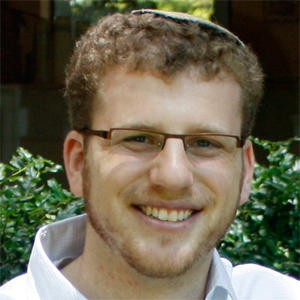“One Good Thing about Music…”

Beshallah
By :
Charlie Schwartz JTS Alum (Rabbinical School, Davidson School)
Posted On Feb 4, 2012 / 5772 | Torah Commentary




One good thing about music: when it hits you, you feel no pain.” So opens Bob Marley’s reggae anthem “Trenchtown Rock.” This lyric cuts to the heart of music’s awesome power to transform one’s state of being. Music can touch something deep inside of us, can make us feel. Melodies express complex, even contradictory, emotions and ideas; they can soothe pain with joy, while adding feelings of loss or nostalgia. This emotive power of music stands at the center of this week’s Torah portion, Beshallah.
As the waters of the Sea of Reeds come crashing down on Pharaoh’s pursuing army, we read, “And when Israel saw the wondrous power which the Lord had wielded against the Egyptians, the people feared the Lord; and they had faith in the Lord and His servant. Then Moses and the Israelites sang this song to the Lord” (Exod. 14:31–15:1). What follows is Shirat Hayam, the Song of the Sea, a glorious poem celebrating God’s power. Well known for its place in the daily liturgy, Shirat Hayam enhances the straightforward telling of the Exodus with metaphoric imagery placing the focus on God’s might. Professor Nahum Sarna highlights this shift in imagery in his Jewish Publication Society commentary, noting that in the narrative of the Exodus, the splitting of the Sea of Reeds is preceded by a naturalistic “strong east wind” that blew all night long (Exod. 15:8). In the poetic Shirat Hayam, this wind is replaced by a “blast of [God’s] nostrils” (Exod. 15:8). In the biblical text, Moses uses the power of song to express the awe and majesty of the moment, going beyond the limits of prose to capture the greatness of God.
Within the classic rabbinic commentaries, the Rabbis disagree as to why Moses chose this particular moment to sing. The 11th-century commentator Rashi writes, “Then, when [Moses] saw the miracle, it arose in his heart to sing a song.” In Rashi’s understanding, the amazing events at the Sea of Reeds ignited Moses’s desire to sing. Witnessing the full force of God’s power made Moses so awestruck he broke out into song. In this interpretation, Moses’s display of pure emotion inspired the Children of Israel to join him in song and reflect that emotion.
In contrast to Rashi’s understanding of Shirat Hayam, the 16th-century commentator the Kli Yakar implicitly asks why Moses wasn’t inspired to sing during the multiple miracles and acts of God he experienced throughout the Exodus narrative. The Kli Yakar writes, “[Singing] did not occur during the Exodus from Egypt because Moses knew that the Children of Israel had limited faith. Only when [Moses] saw on the shore of the sea that they had faith in God . . . then did he sing.” In the Kli Yakar’s understanding, Shirat Hayam was inspired not only by God’s greatness, but by the faith of the Israelites.
For Rashi, Shirat Hayam, the inspiration to sing, expresses a reaction to an external experience. Song evokes and reflects the emotion of a specific moment. For the Kli Yakar, Shirat Hayam is not the reaction to an external event, but rather an expression of an internal spiritual state. Put in different terms, according to Rashi, we sing to evoke emotion that might be lying dormant or that we never knew existed, while through the lens of the Kli Yakar’s interpretation, song is meant to give voice to the emotions we already feel. For Rashi music serves as the root cause of the emotion, while for the Kli Yakar, music is the expression of emotion. Do we sing in order to feel joy or do we sing because we are joyous?
Placed in the modern context, these two approaches to song are simultaneously embodied in the sacred music of Jewish prayer. The melodies of Jewish communal prayer aspire to both amplify and express feeling, while allowing brief access to a broader emotional palate replete with feelings of connection, closeness, awe, and the Divine. To use Bob Marley’s words, this is what being “hit” by the music of Jewish prayer means.
The challenge is to reach a place where the music of prayer might amplify one’s emotions and perhaps spark new feelings. To achieve this, the music of one’s community—the melodies sung during prayer, around the table, and at home—must be vibrant and evocative. The rhythm of the traditional nusach, or chanting, of prayer should be taught like jazz, where improvisation within a certain key or mode adds emphasis and emotion. (It’s no coincidence that Al Jolson’s Jakie Rabinowitz [The Jazz Singer] struggled in deciding between life as a cantor and life as a jazz singer.) New melodies from across the Jewish spectrum should be integrated with familiar communal melodies rich with depth and connection to the past. Our prayer leaders should be given the latitude to innovate and experiment.
To hold both Rashi and the Kli Yakar’s understandings of Shirat Hayam in mind when standing in prayer is undoubtedly a challenge, but it starts with one melody, one prayer leader, one powerful experience. It begins with communities coming together to sing, to learn new melodies, and to attempt to elevate the song of prayer to the emotional heights, both internal and external, ofShirat Hayam.
To get started on this journey, here is a new melody to inspire you, from Joey Weisenberg’s Joey’s Nigunim: Spontaneous Jewish Choir.
The publication and distribution of the JTS Torah Commentary are made possible by a generous grant from Rita Dee and Harold (z”l) Hassenfeld.